Ancient artifacts are objects or items of historical, cultural, or artistic significance that have gained widespread recognition and importance across the world.
These historical objects may represent a specific period of history, a particular culture or civilization, or may have significant religious or spiritual meaning.
They can be paintings, sculptures, manuscripts, or even entire buildings or structures. Some of the most famous artifacts in world history include
- The Rosetta Stone
- Tutankhamun’s mask
- The Terracotta Army
- Stonehenge
- The Dead Sea Scrolls
These artifacts provide insight into the lives and cultures of people from the past and continue to fascinate and intrigue people today.
Famous Artifacts
1. Rosetta Stone
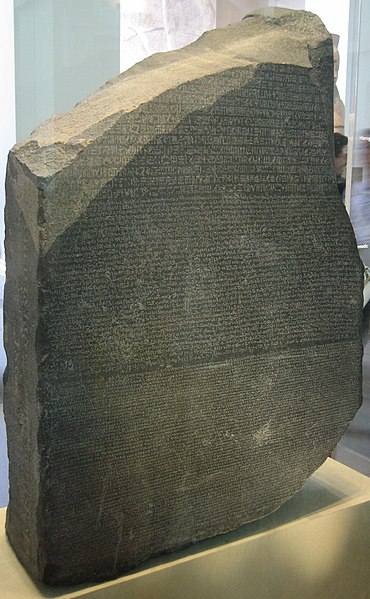
The Rosetta Stone is a famous artifact from ancient Egypt that was discovered in 1799 by a French soldier in the town of Rosetta (Rashid in Arabic) during the French campaign in Egypt.
The stone is a black granite slab that contains a decree issued at Memphis in 196 BCE by King Ptolemy V in three scripts: hieroglyphics, demotic script, and Greek. The decree praises Ptolemy V and grants him various honors and privileges.
The Rosetta Stone played a key role in deciphering hieroglyphics, which were an ancient Egyptian writing system that had been a mystery for centuries. French linguist Jean-Francois Champollion was able to decipher the hieroglyphics on the stone in 1822, using the Greek text as a guide.
The decipherment of the hieroglyphics on the Rosetta Stone opened up a wealth of knowledge about ancient Egyptian culture and history, and is considered one of the greatest achievements in the field of Egyptology. Today, the Rosetta Stone is housed in the British Museum in London.
2. Tutankhamun’s mask
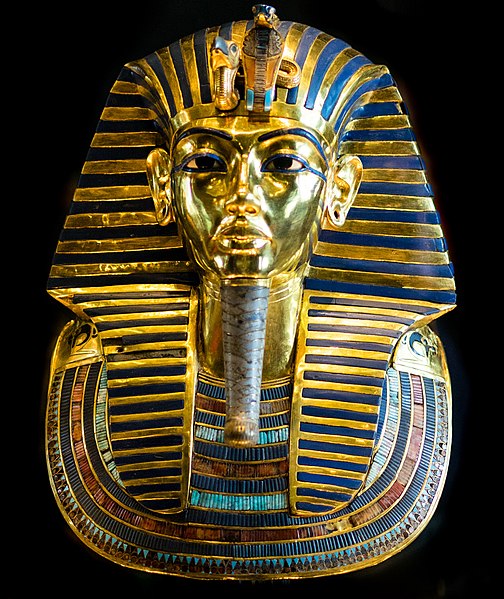
Tutankhamun’s mask is one of the most famous artifacts from ancient Egypt. It is a solid gold death mask that covers the face of the mummified Pharaoh Tutankhamun, who ruled Egypt in the 14th century BCE.
The mask was discovered in 1922 by British archaeologist Howard Carter, who led an expedition to the Valley of the Kings in search of the tomb of Tutankhamun.
The mask is made of solid gold and weighs about 11 kg (24 pounds). It is decorated with precious stones, including lapis lazuli and turquoise, and depicts the pharaoh’s face with a serene expression and a ceremonial beard.
Also Read: Famous Archaeological Discoveries
The mask is considered one of the greatest masterpieces of ancient Egyptian art and is widely admired for its exquisite craftsmanship.
The discovery of Tutankhamun’s tomb and the mask caused a sensation in the world of archaeology and brought renewed interest in ancient Egyptian art and culture. Today, the mask is housed in the Egyptian Museum in Cairo and is considered one of the greatest treasures of Egypt.
3. Terracotta Army
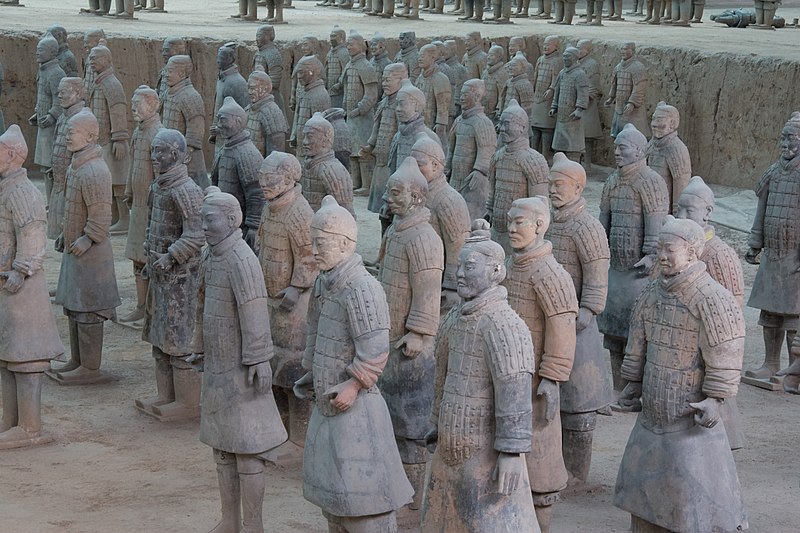
The Terracotta Army is a collection of terracotta sculptures depicting the armies of the first emperor of China, Qin Shi Huang.
The sculptures were buried with the emperor in his tomb to protect him in the afterlife. The army was discovered in 1974 by a group of farmers in Xi’an, China, and is now a UNESCO World Heritage Site.
The Terracotta Army consists of more than 8,000 life-sized figures, including soldiers, horses, and chariots, arranged in battle formations.
Each figure is unique, with individual facial features, hairstyles, and clothing, and was created using molds and fired in kilns. The soldiers carry real weapons, such as swords, spears, and crossbows, and were originally painted in bright colors.
The Terracotta Army is considered one of the greatest archaeological finds of the 20th century and provides a glimpse into the military and artistic achievements of ancient China. The site has become a major tourist attraction and is visited by millions of people every year.
4. Stonehenge

Stonehenge is a prehistoric monument located in Wiltshire, England, believed to have been constructed between 3000 BCE and 2000 BCE. The monument consists of a ring of standing stones, with each stone weighing up to 25 tons, arranged in a circular pattern.
The purpose of Stonehenge is still a matter of debate, but it is believed to have had religious or ceremonial significance for the ancient people who built it.
The stones were likely transported from a distance using a combination of rollers, sledges, and rafts, and the construction of the monument would have required a large labor force and considerable planning and organization.
Stonehenge is considered one of the most famous and enigmatic monuments in the world and attracts millions of visitors every year.
The site is surrounded by a number of other prehistoric landmarks, including burial mounds, earthworks, and ancient settlements, providing a fascinating glimpse into the lives and culture of people from the distant past.
5. Dead Sea Scrolls
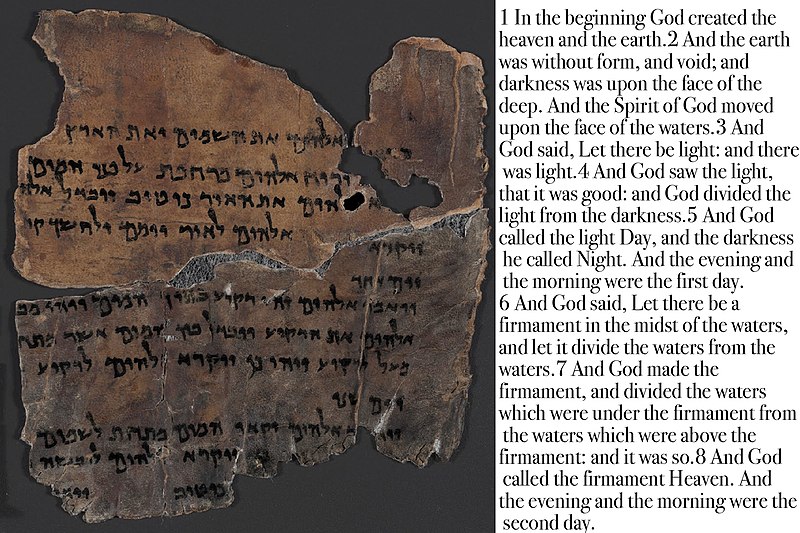
The Dead Sea Scrolls are a collection of Jewish texts that were discovered in the mid-20th century in the vicinity of the Dead Sea, near the ancient settlement of Qumran.
The scrolls include religious and historical texts, hymns, prayers, and other documents, many of which date back to the Second Temple period, between the 3rd century BCE and the 1st century CE.
The Dead Sea Scrolls were discovered between 1947 and 1956 by Bedouin shepherds and archaeologists. The scrolls are written in Hebrew, Aramaic, and Greek, and are considered to be among the oldest surviving copies of the Hebrew Bible.
The discovery of the Dead Sea Scrolls is considered one of the most significant archaeological finds of the 20th century and has greatly expanded our understanding of Jewish history and the development of the Hebrew Bible.
The scrolls are now housed in several museums in Israel and the United States and are considered an invaluable resource for scholars studying ancient Judaism and the origins of Christianity.
6. The Great Sphinx of Giza
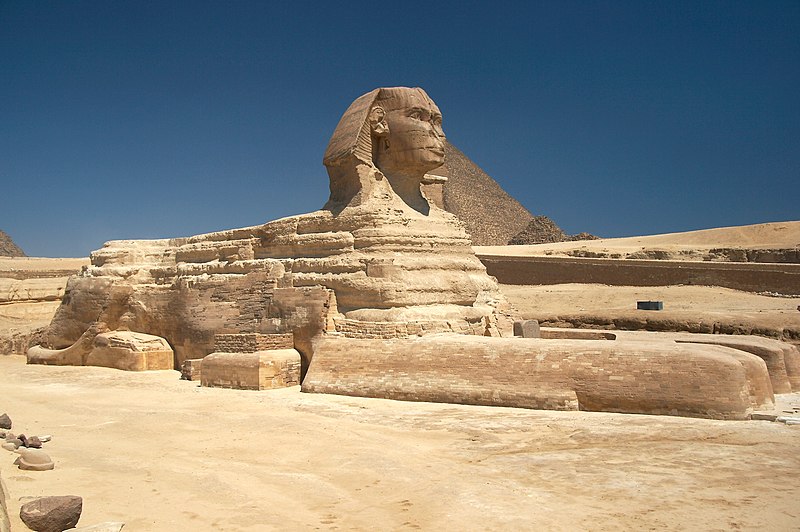
The Great Sphinx of Giza is a massive limestone statue located near the pyramids of Giza in Egypt. The statue depicts a mythical creature with the body of a lion and the head of a human, believed to represent the pharaoh Khafre.
The Sphinx is believed to have been constructed around 2500 BCE during the Old Kingdom period of ancient Egypt.
The Great Sphinx of Giza is considered one of the largest and most famous monumental sculptures in the world, measuring 20 meters (66 feet) in height and 73 meters (240 feet) in length.
The Sphinx is surrounded by a number of mysteries and legends, including its original purpose and the significance of its missing nose.
Despite its age and exposure to the elements, the Great Sphinx of Giza remains one of the most impressive and awe-inspiring monuments of ancient Egypt, attracting millions of visitors every year.
7. The Parthenon
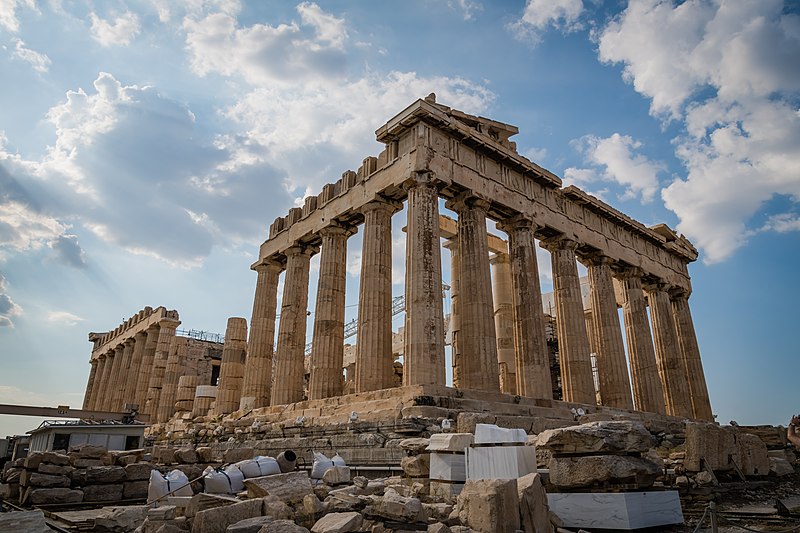
The Parthenon is a temple located on the Acropolis of Athens, Greece, dedicated to the goddess Athena. It was constructed in the 5th century BCE during the height of the Athenian Empire, and is considered one of the greatest surviving examples of ancient Greek architecture.
The Parthenon is an enormous temple made of marble, measuring 69.5 meters (228 feet) in length, 30.9 meters (101 feet) in width, and 13.72 meters (45 feet) in height.
The temple is decorated with elaborate sculptures, including the famous frieze depicting the Panathenaic procession, which wraps around the exterior of the temple.
The Parthenon has had a complex history, including being converted into a Christian church in the 6th century CE, a mosque in the 15th century CE, and then being severely damaged in the 17th century CE.
It has undergone significant restoration and reconstruction efforts over the centuries, and today remains a major tourist attraction and a symbol of ancient Greek civilization and culture.
8. The Shroud of Turin
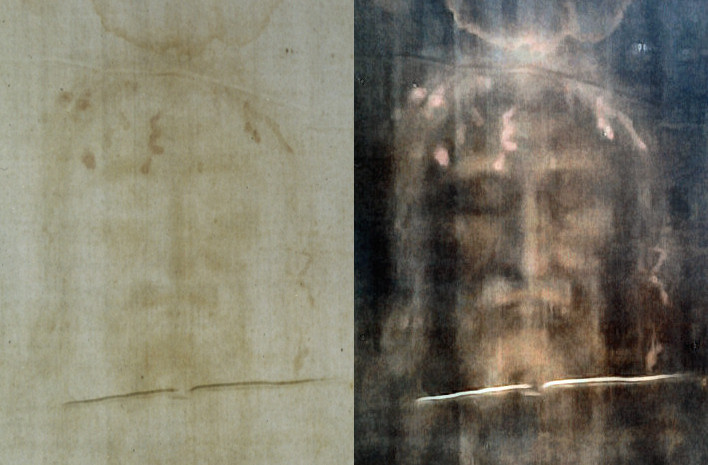
The Shroud of Turin is a piece of linen cloth that is believed by some to be the burial shroud of Jesus Christ. The shroud is a 4.4-meter (14.3-foot) long and 1.1-meter (3.6-foot) wide piece of cloth, with the image of a man who appears to have been crucified imprinted on it.
The shroud’s origins and authenticity have been the subject of much debate and controversy. Carbon dating tests conducted in 1988 suggested that the shroud dated back to the Middle Ages, but some experts believe that the results were flawed and that the shroud may be much older.
The Shroud of Turin has been studied extensively by scientists, theologians, and historians, and has attracted millions of visitors over the years. It remains one of the most famous and enigmatic artifacts in the world, and is regarded by many as a sacred relic.
9. The Bayeux Tapestry
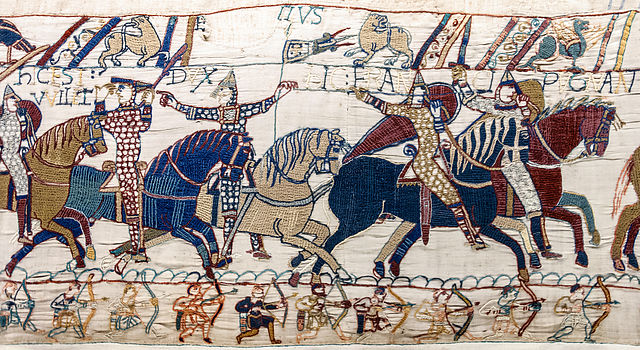
The Bayeux Tapestry is an embroidered cloth that depicts the events leading up to the Norman Conquest of England in 1066. The tapestry is approximately 70 meters (230 feet) long and 50 centimeters (20 inches) tall, and is made of linen with wool embroidery.
Also Read: Bayeux Tapestry Facts
The tapestry tells the story of the Norman invasion of England, including the Battle of Hastings and the events leading up to the crowning of William the Conqueror as king of England. The embroidery features over 50 scenes, with inscriptions in Latin.
The origins of the Bayeux Tapestry are not entirely clear, but it is believed to have been created in the 1070s, just a few years after the Norman Conquest. The tapestry has been housed in Bayeux, France, since the 11th century and is considered one of the most important surviving examples of Romanesque art.
The Bayeux Tapestry is renowned for its intricate and detailed embroidery, and provides a fascinating glimpse into one of the most significant events in English and French history.
10. The Crown Jewels of the United Kingdom
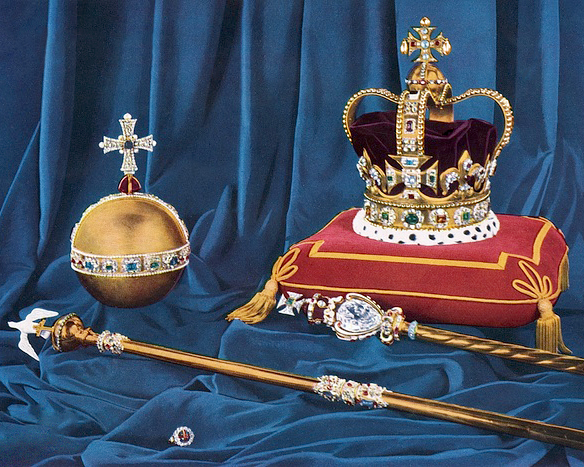
The Crown Jewels of the United Kingdom are a collection of ceremonial objects, including regalia and vestments, that are used in the coronation and other royal ceremonies.
The collection includes some of the most famous and valuable jewels in the world, such as the Imperial State Crown, the Sovereign’s Sceptre, and the Cullinan I diamond, which is the largest clear-cut diamond in the world.
The Crown Jewels have a long history, dating back to the Middle Ages, and have been used in the coronation of every British monarch since King Edward VII in 1902. The collection includes crowns, swords, scepters, rings, and other ceremonial objects, many of which are adorned with precious stones and jewels.
The Crown Jewels are housed in the Tower of London and are considered to be one of the most important symbols of the British monarchy and the country’s history and heritage. The jewels are on public display and attract millions of visitors every year.
The Crown Jewels represent the grandeur and opulence of the British monarchy and are a testament to the skill and craftsmanship of the jewelers who created them.
11. The Rosary of the Philosophers
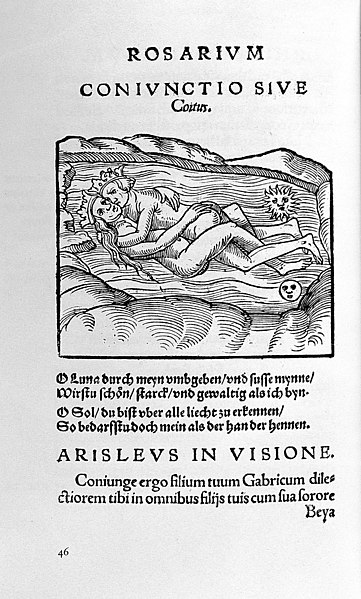
The Rosary of the Philosophers, also known as Rosarium Philosophorum, is an alchemical manuscript that was first published in the 16th century. The manuscript is a series of allegorical illustrations and texts that depict the alchemical process of transforming base metals into gold.
The Rosary of the Philosophers was created by a group of European alchemists who believed in the transmutation of metals and the attainment of spiritual enlightenment through the practice of alchemy.
The manuscript is filled with symbolic images and esoteric texts that were meant to guide practitioners through the various stages of the alchemical process.
The Rosary of the Philosophers has had a significant impact on the development of Western alchemy and has been studied by alchemists, philosophers, and spiritual seekers for centuries.
The manuscript has been interpreted in many different ways, and its meaning remains a subject of debate and speculation. Nonetheless, it is considered to be one of the most important works of Western alchemy and has influenced the development of Western esotericism and spiritual traditions.
12. The Book of Kells
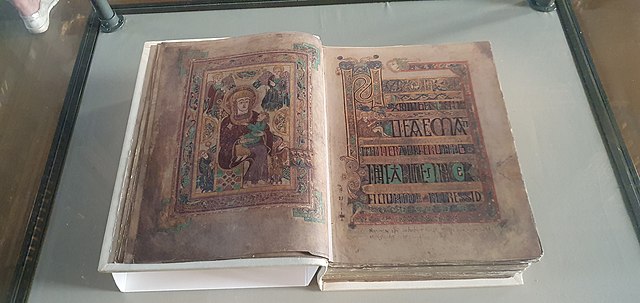
The Book of Kells is an illuminated manuscript Gospel book in Latin, containing the four Gospels of the New Testament, created by Celtic monks in Ireland around 800 CE. It is considered one of the most important and magnificent examples of medieval Christian art and one of Ireland’s greatest cultural treasures.
The manuscript is believed to have been produced in a monastery on the island of Iona, Scotland, and later moved to Kells, County Meath, in Ireland.
The book contains a total of 680 pages, with intricate decorations and illustrations throughout, including ornate initials, symbols, and full-page illuminations. The illuminations feature a unique combination of Celtic and Christian art, with intricate patterns, interlacing designs, and colorful figures.
The Book of Kells is regarded as one of the finest examples of Western calligraphy and manuscript illumination and is considered a masterpiece of medieval art.
It has been studied by scholars and artists for centuries, and its influence can be seen in many works of art, including the work of the Art Nouveau movement in the late 19th and early 20th centuries.
The Book of Kells is currently on display at the Trinity College Library in Dublin, Ireland, and attracts visitors from all over the world.
13. The Code of Hammurabi
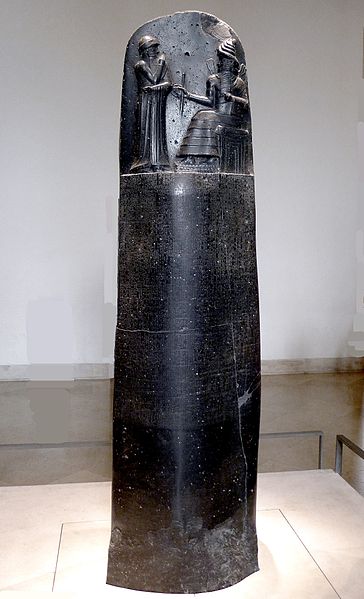
The Code of Hammurabi is a well-preserved Babylonian law code that was created around 1754 BCE by King Hammurabi, who ruled over ancient Babylon (located in present-day Iraq).
The code consists of 282 laws carved onto a large black stone monument, which is now displayed in the Louvre museum in Paris, France.
The Code of Hammurabi is considered one of the oldest known written legal codes and contains laws regulating various aspects of Babylonian society, including family life, property ownership, trade, and crime.
The laws are written in cuneiform script, and the stone monument includes an image of the king receiving the code from the Babylonian god of justice, Shamash.
The Code of Hammurabi provides a valuable insight into the legal system and social norms of ancient Babylon and has had a significant influence on the development of legal systems around the world.
The code was based on the principle of “an eye for an eye, a tooth for a tooth,” and contained laws that were both harsh and just. The code is regarded as a landmark achievement in the history of law and justice, and is considered an important artifact of ancient Mesopotamian civilization.
14. The Moai Statues of Easter Island

The Moai Statues are a collection of large stone statues located on Easter Island, also known as Rapa Nui, a remote island in the Pacific Ocean belonging to Chile.
The statues were created by the indigenous Rapa Nui people between the 13th and 16th centuries and are among the most iconic and mysterious artifacts of the ancient world.
The Moai Statues are made of volcanic rock and range in size from about 1 meter (3 feet) to over 10 meters (33 feet) tall and weighing up to 80 tons. The statues depict stylized human faces and were originally placed on ceremonial platforms known as ahu, which were built along the coastline of the island.
The purpose of the Moai Statues is not entirely clear, but it is believed that they were created to honor the ancestors of the Rapa Nui people or to commemorate important leaders or events. The statues were carved using stone tools and were transported over long distances using wooden sledges and ropes.
The Moai Statues are considered one of the greatest achievements of Polynesian art and engineering and have fascinated people around the world for centuries. The statues continue to be an important symbol of the Rapa Nui people and their cultural heritage.
15. The Winged Victory of Samothrace
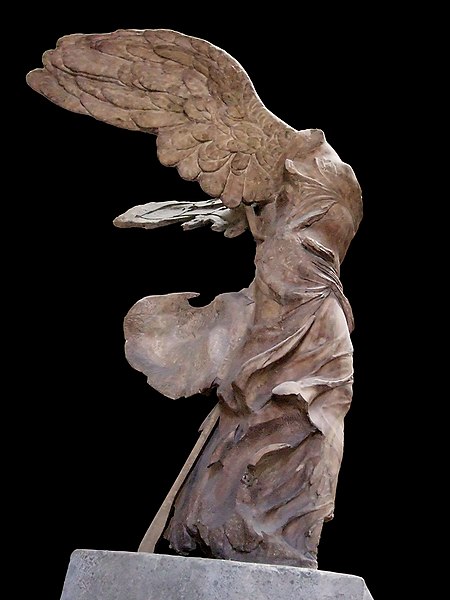
The Winged Victory of Samothrace, also known as Nike of Samothrace, is a large Hellenistic statue of the Greek goddess Nike, created around 190 BCE.
The statue was discovered in 1863 on the island of Samothrace in Greece by French archaeologist Charles Champoiseau and is now displayed at the Louvre museum in Paris, France.
The Winged Victory of Samothrace depicts the goddess Nike in the form of a winged woman, standing on the prow of a ship with her wings outstretched. The statue is made of marble and measures over 5 meters (16 feet) in height.
The statue was likely created to commemorate a naval victory by the Greeks and was originally displayed on a high pedestal in a sanctuary on the island of Samothrace.
The Winged Victory of Samothrace is considered one of the greatest masterpieces of Hellenistic art and a symbol of ancient Greek culture and civilization.
The statue’s dynamic pose, flowing drapery, and intricate detailing have inspired artists and designers for centuries, and it is widely regarded as one of the most iconic and beautiful sculptures in the world.
